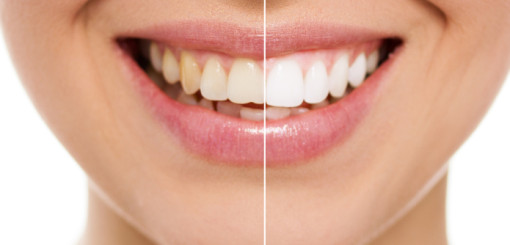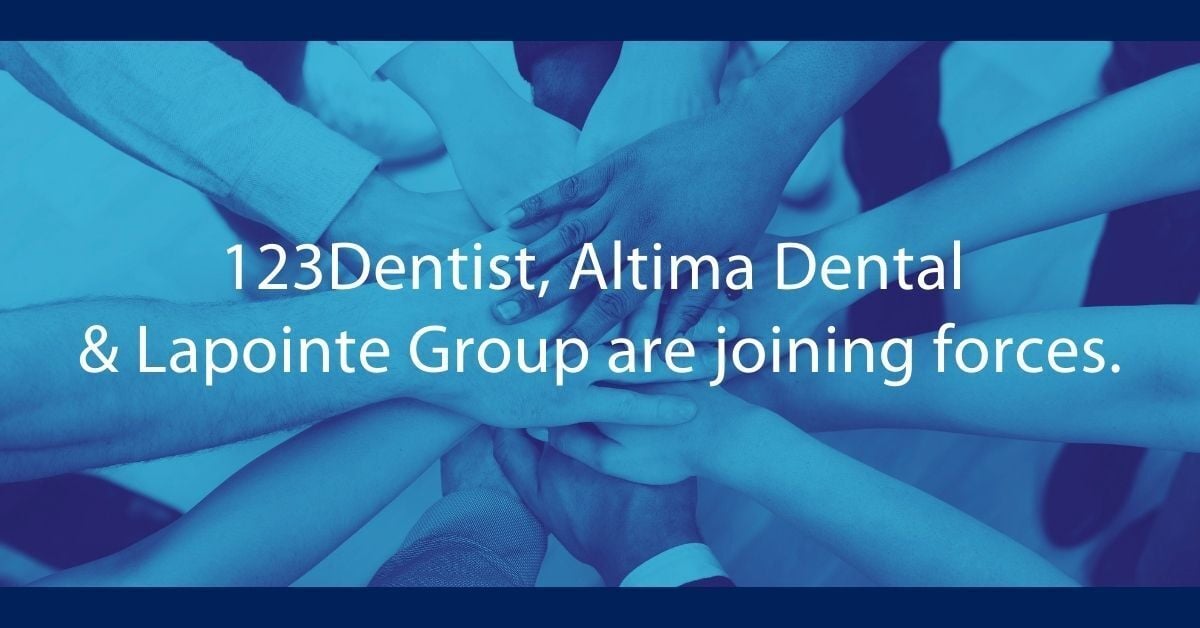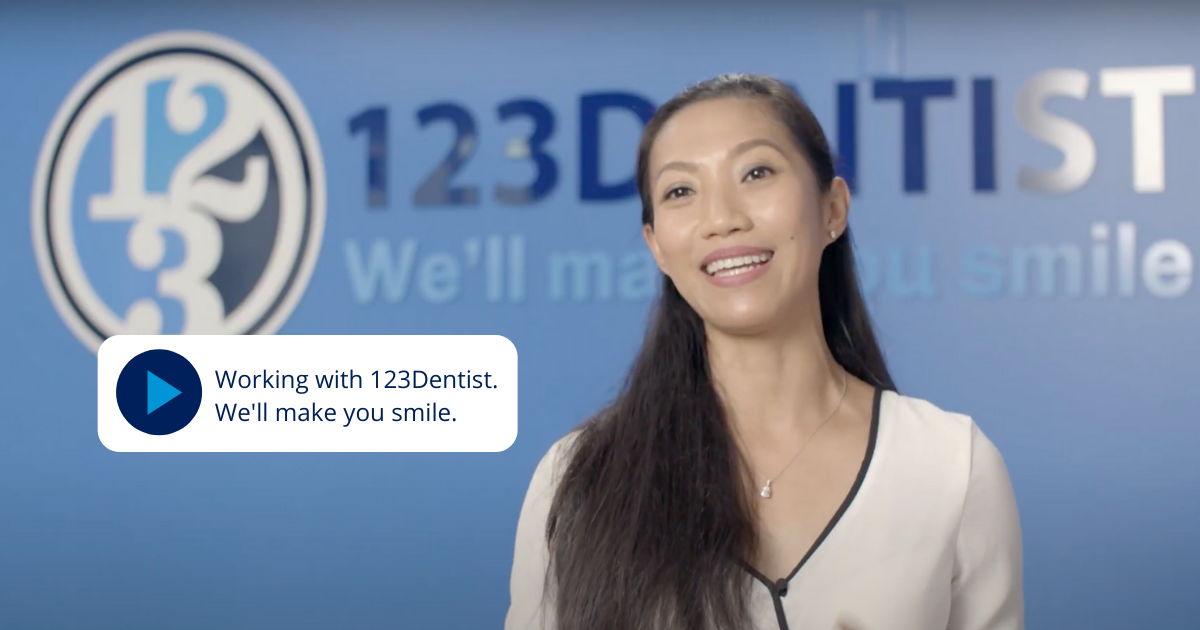The natural shade of your teeth ranges from a light off-grey (off-white) to slightly more yellow in tint, and over time your teeth will change in colour naturally as you age. Staining is another factor, particularly if you drink certain fluids like wine, coffee or dyed sodas on a regular basis. Smoking cigarettes is another major cause of premature staining.
Surface staining can also be prevented by regular care. Brushing after meals helps stains from forming, as long as you wait 30 minutes or more after consuming anything acidic.
White teeth matter to all of us because the shade of our teeth is often the first thing anyone notices about our smile. You should be proud of your smile, and thankfully whiter teeth are within reach, as long as you stick to this guide, presented by the good folks at 123 Dentist and by our member clinics. Remember, every 123 Dentist clinic offers some of the services below, and your dentist can recommend the best, safest course of action when whitening your smile.
What Shade Are My Teeth?
There is no one set guide for measuring the shade of teeth, but our dentists often use a ‘Shade Guide’ to show the range of colour for teeth, and contrast the shade your teeth are currently, with the shade you wish to achieve with any whitening treatment. A change of just a few shades can make a huge visual difference, so don’t go too far with your whitening, because there is such a thing as an unnatural brightness, depending on the shade of your skin.
Whitening Tooth Pastes & Chewing Gums
Surface whiteners are products that don’t substitute for other professional products or services, but they do provide some basic benefits, namely preventative ones. Ingredients like titanium dioxide, baking soda and others improve the abrasiveness of gum or paste on your teeth, helping to avoid stains from forming in the first place. They won’t actually brighten your teeth however, that requires professional tools and bleach. Over the counter sugar free gum and toothpastes that boast whitening don’t cause any harm, and regular use can help prevent stains, but that’s about it.
There are also certain toothpastes with bleaching ingredients, but these should only be used as directed by your dentist and are not typically available over the counter. You may also find certain rinses boasting whitening abilities, but whitening is at most a ancillary benefit to killing bacteria, and mouth rinses only work when used as directed over longer periods of time.
White Strips
White strips come in a variety of strengths and brands, and work by moulding thin pieces of disposable plastic called polyethylene to the teeth. Hydrogen peroxide or carbamide peroxide are used to whiten the teeth and break down bacteria that cause stains. The strips are clinically proven to whiten your teeth at a reasonable cost, IF used properly over time. However white strips only whiten the surface of teeth and done reach around the sides of teeth very well. The effects of white strips are required to be marked on the box, and the price varies with the strength. Keep in mind that the effects are limited, so don’t expect the same results as you would from in-chair whitening or take-home trays.
Take Home Whitening Trays
One of the most popular and effective methods for whitening your teeth significantly is take home whitening trays with bleaching gel. These kits are a little higher in price than whitening strips, usually retailing for over $200.00. They can be purchased from most dental clinics and some pharmacies and if directions are followed, can significantly reduce stains on teeth. It’s very important to used take home whitening trays properly and as advised by a dentist. Custom trays and over the counter options exist, with the former offering better results. If you experience gum sensitivity before or during use, consult a dentist before continuing.
In-Office Chair Side (Laser) Whitening
For a truly radiant smile and the largest improvement in a short period of time, brighten your teeth four full shades in just minutes with chair side whitening. Custom trays or dental dams along with a custom gel mixed to specifications you decide with your dentist are very effective and fast. Your dentist can speed up the process using Zoom Laser Whitening or similar procedure. With laser whitening, a hot, blue light is used to speed up the gel’s effects and allows the dentist to monitor progress. Chairside whitening is more effective in a shorter time, but it also uses higher levels of chemicals like hydrogen peroxide that cause increased tooth sensitivity or discomfort for about 24 hours after the procedure. If you are already prone to sensitive teeth you may be advised to use a take-home treatment, which typically uses lower levels of hydrogen peroxide.
Whitening False Teeth, Crowns & Veneers
Your dentist can whiten false teeth to match your real ones. If you have a false tooth, crown or veneers that have been stained or don’t match your real teeth as well as they should, your dentist is now able to take that into account and offer colouring to match. If you have had a veneer or crown for a long time, it may also be time for a replacement, as they don’t last forever.
Different Types Of Bleaching
There are two types of bleaching used by our dentists. The first is called ‘Vital Bleaching’ and is used to whiten living teeth. ‘Non-Vital Bleaching’ is used for teeth that are considered dead, where a root canal has been performed. This is used to brighten your teeth from the inside out. If you suffer from gum disease or other medical condition, your dentist may recommend against bleaching. Which brings us to the next question, which is often asked by so many who are considering whitening…
Is Whitening Safe?
A common misconception is that bleaching your teeth is dangerous or bad for your teeth. This misinformation comes from older methods of bleaching, which were too strong and damaged enamel on teeth. Today, bleaches for teeth and other methods take enamel into account and there are blocks in the ingredients that protect your teeth from the bleach. Other technology, like lasers and improved studies on teeth themselves have made procedures safer. Still, if you don’t need whiter teeth, your dentist won’t recommend bleaching them just because. You’ll also need to follow any safety instructions given to avoid damaging your teeth AFTER whitening them.
Many 123 Dentist offices offer whitening promotions, including FREE take home whitening trays, free in-office bleachings AND free whitening FOR LIFE with regular check-ups. Talk to your local 123 Dentist today to see if they offer any whitening promotions, or look online for a list of our clinics and services.






